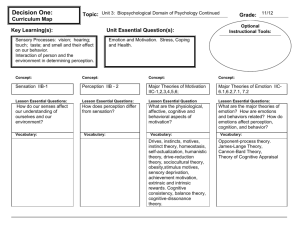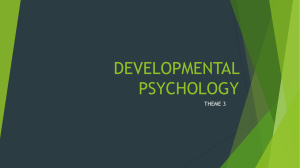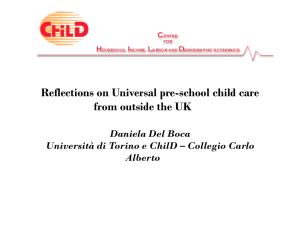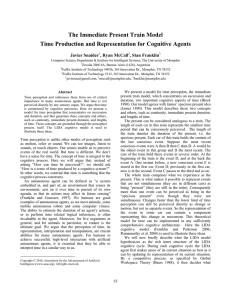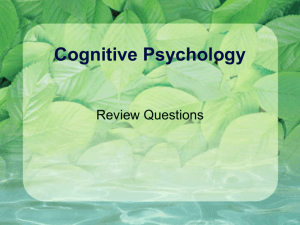Infancy - Lyons USD 405
advertisement
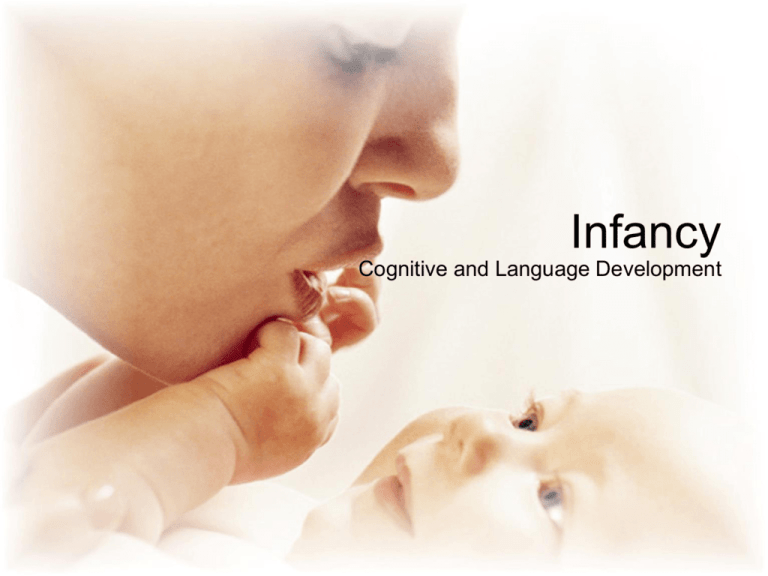
Infancy Cognitive and Language Development Cognitive Development • Cognitive – process of knowing and sensations, perception, imagery, retardation, memory, recall, problem solving, reasoning, and thinking • Learning – relatively permanent change in a capacity or behavior that results from experience. – Permits us to adapt to our environment by building on previous experience – Must be some change on behavior – This change must be relatively stable – The change must result from experience When Infants Start Learning • By 30th week of gestation • Studies on prenatal hearing – Found neonate recognizes mothers voice and prefers mothers voice – Use a nibble apparatus attached to tape recorder, different type of sucking triggered mothers voice or other woman. • Reading Study – Mothers read The Cat In The Hat to neonate for twice a day for last six weeks. – After birth, infant preferred book over other books BABIES AND MEDIA COGNITIVE AND LANGUAGE OUTCOMES Type of media played a big part in learning Shows like Dora the Explorer, Clifford, Blue’s Clues, encouraged learning by participation and increased cognitive awareness 2:24 2:09 1:55 1:40 1:26 1:12 0:57 0:43 0:28 0:14 0:00 2:05 1:35 1:26 1:22 0:51 Others like Sesame Street and Teletubies did not show the growth Hours Piaget: Sensorimotor Period • 3 Characteristics of Sensorimotor period – Object permanence- objects have a reality of its own that extends beyond their immediate perception • Object exists even when it cannot be seen • About 6 months • Peek-a-boo, hide and seek – Inability to represent the world to themselves internally • Only here and know – Cannot coordinate grasping with visual cues • Out of site, out of mind Post-Piagetian Research • Playing is Learning – Provide experience infant cannot generate – Share attention, emotional feelings, and intentions with others • Consequences of Material Depression – Developmental deficits due to lack of mother-infant interaction – Child tends to lag behind cognitively – Child more withdrawn, unresponsive and inattentive – Failure to Thrive – symptoms include lack of growth, listlessness, and problems sleeping and eating Bruner’s Theory • 3 Modes Cognitive Representation – Enactive – children represent the world through their motor acts – birth to 2 – Ikonic representation – children use mental images or pictures that are closely linked to perception – preschool/kindergarten years – Symbolic representation – children use arbitrary and socially standardized representation of things – Know something 3 ways; doing, image, and symbol Language • Structured system of sound patterns with socially standardized meanings • Communication – process by which people transmit information, ideas, attitudes, and emotions to one another. • Conceptualization – grouping perceptions into categories on the basis of certain similarities Language Development • Nonverbal or Kinesics – body language (hand, hands, gestures) – Sign language for young child • Paralanguage – Stress, pitch, volume Sequences of Language • Crying (birth) • Vocalization (1-6 months • Babbling (6 months) – Da da da • Receptive vocabulary (6 to 9 months) – Understand some words • Holophrases (10 to 13 months) – Use of single word (could have different meanings) • Overextension (16 to 20 months) – Use many words to mean more that meaning (over use word) • Two-word sentences “ Book there” (18 to 22 months) • Telegraphic Speech (2 yrs) – Precise 2 or 3 word combinations, more grammatically correct




